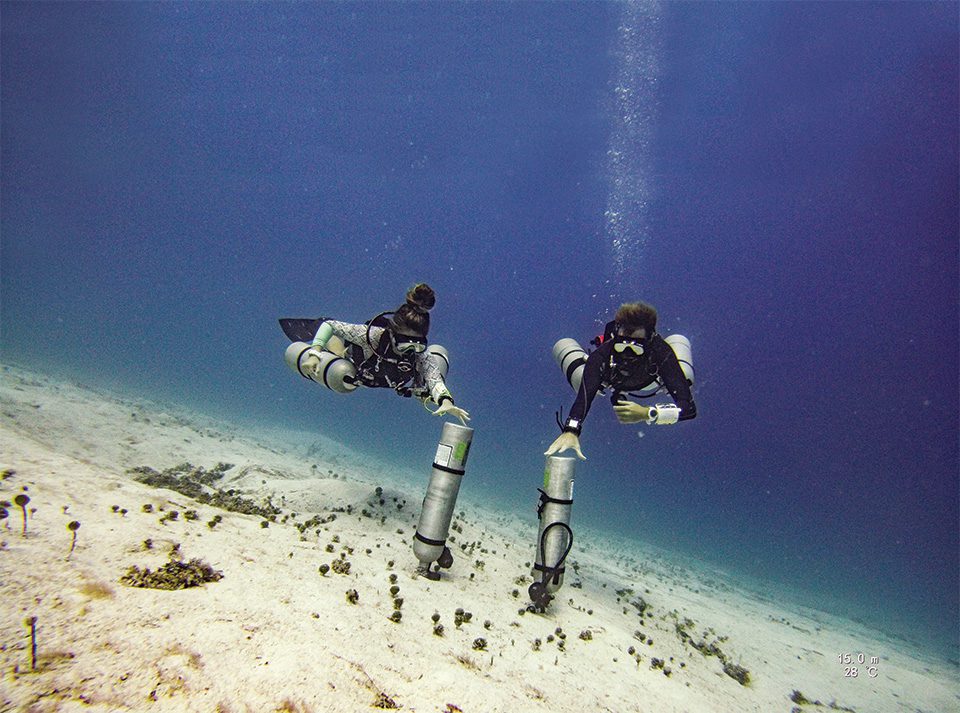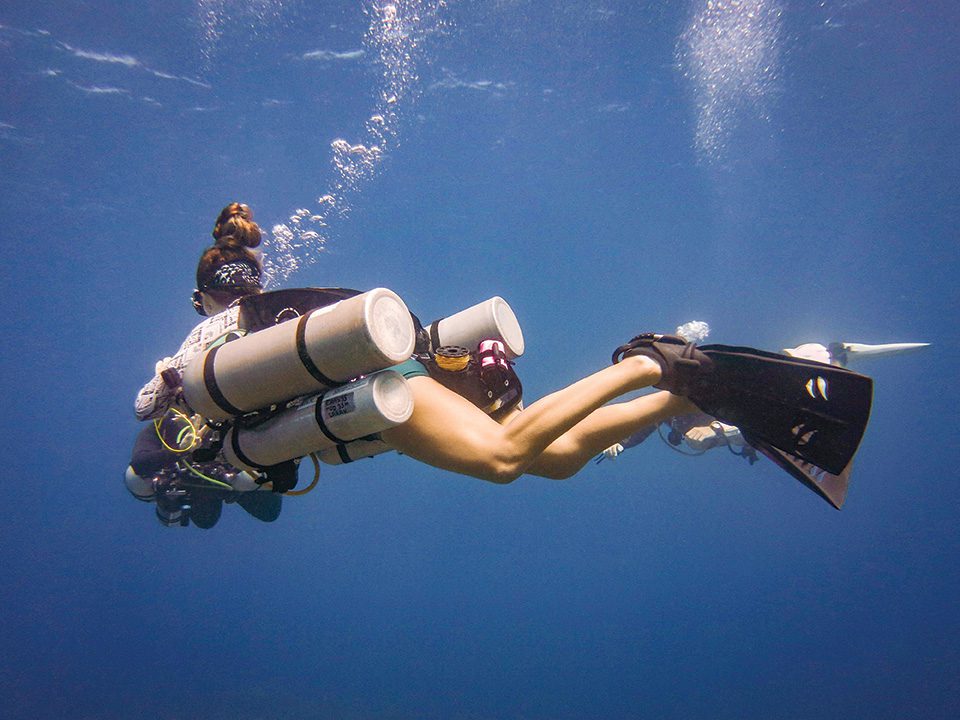By Sarah Walls. Photos by Grace Williams
The first time I read about technical diving, I thought I’d never try it. I combed through a tec-diving manual and found claims stating that even if everything is done correctly, there is still considerable risk for accidents and death. These claims stuck to my mind like crusted barnacles. Who would try technical diving if it is so inherently dangerous?
Fast forward a year and four months, and I found myself as the answer to my own question. I sat in a classroom with my manual and equipment splayed across a desk, ready for my Tec 40 course to start. I wondered what happened over the last 16 months to change my mind.
I’d been working as a scuba instructor and increased my number of dives from just over 100 to well over 1,000. Diving became part of my everyday life. Breathing compressed air through a regulator became as normal as taking a breath on the surface. I was still madly in love with diving, but submerging had become second nature and no longer felt like an exciting challenge.
Tec diving made me a student again. It reminded me of something I love about diving: the exploration of the unknown. Not only by diving deeper, but by delving further into my abilities, I could face novel challenges again, master new skills and refine old ones I’d become complacent with.
During my first confined-water session, I felt like a brand-new student: awkward, buoyant and overwhelmed by all the procedures to remember. We spent hours throughout the course running through drills until I no longer felt like a newborn diver, but proficient in my new abilities. I’d optimized my reaction time in emergency situations, like controlling a free-flowing regulator; perfected procedures of staging and donning deco bottles; and fine-tuned my buoyancy until my depth at decompression stops fluctuated by no more than a foot and a half.
Tec diving isn’t for everyone. However, many of my hesitations to try technical diving were overcome by taking other courses. Before my tec course, I completed PADI Deep and Nitrox specialties. These prepared me for increased pressure and effects of narcosis at deeper depths and taught me about diving with higher oxygen contents. I also completed Sidemount and Self-Reliant courses that taught me how to dive with multiple tanks and regulators and explained the importance of redundancy and self-sufficiency, which both play a huge role in tec diving.
Tec diving is obstacle-ridden and humbling, but can reignite a fading passion. It can leave you with a sense of accomplishment and a refined set of diving skills. It grants access to depths beyond recreational limits, where lesser-known shipwrecks and deep reefs lie, waiting to be explored. There will always be risks, but with proper training and preparation, you might also find the answer to your own question.
To learn more about the technical diving programs available at Pura Vida Divers, or to begin your technical diving journey, call them at 561-840-8750 or visit www.puravidadivers.com.



